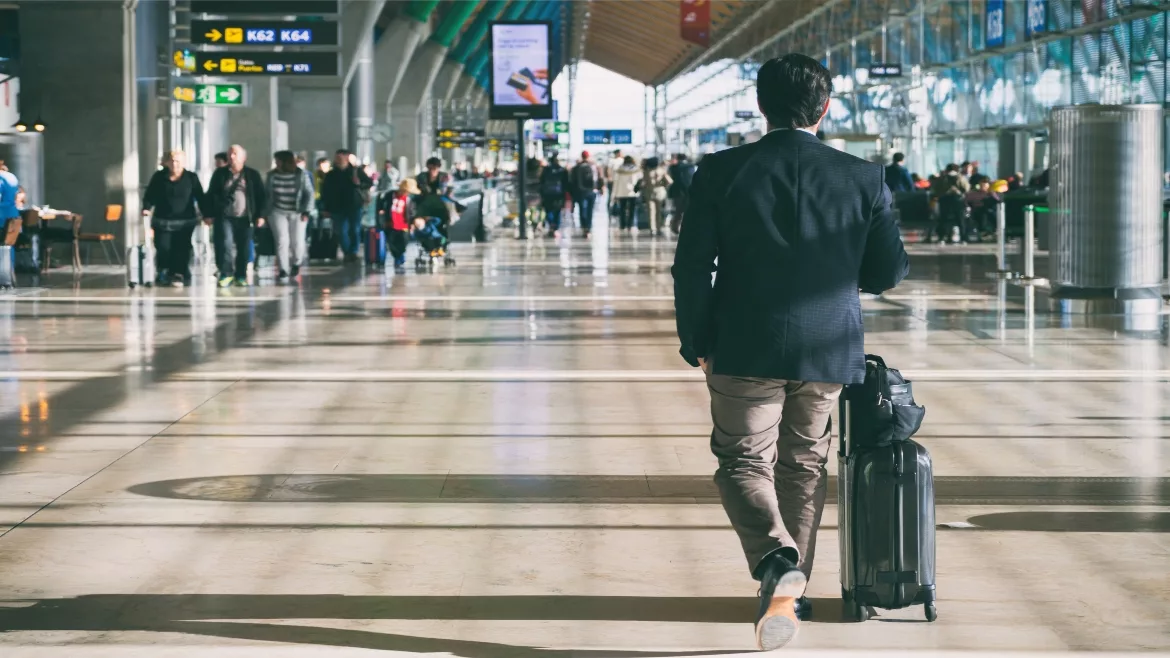The evolution of airport security and the threats that drive it

Image via Freepik
In 2022, we are finally seeing a resurgence in worldwide travel since the beginning of the COVID-19 pandemic. The TSA has screened more passengers this year than during the past two years combined, but we have still yet to return to pre-pandemic passenger levels. Despite this, we see significant delays, cancellations, and other disruptions. This is worrying for both passengers and airlines alike as passenger numbers continue to rise and put further pressure on short-staffed airlines and airports.
In line with the old adage, “necessity is the mother of invention,” innovation and widespread acceptance of advances in passenger screening have historically been driven in large part by major events, tragedies, and security challenges. Some of these include the “shoe bomber” who attempted to detonate a bomb that was hidden in a shoe in 2001, the “underwear bomber” who attempted to detonate plastic explosives hidden in his underwear in 1999, and of course, the historically tragic hijackings that took place on September 11, 2001.
These events were the catalyst for a significant increase in aviation security, including the creation of the TSA in November of 2001. Since this, we have seen a variety of regulations and technologies implemented, such as limiting liquids in carry-on baggage to 100 ml containers, the removal of shoes at checkpoints, and the introduction of the millimeter wave-based Advanced Imaging Technology (AIT) body scanner that requires passengers to stand inside the device with their hands up while they are scanned. Over 1,000 AITs have been deployed in U.S. airports to date.
While these innovations have helped improve security and peace of mind, they’ve also created friction in the screening process, and the COVID-19 pandemic has significantly highlighted our awareness of these challenges.
The pandemic has also brought to light new challenges, such as high levels of absenteeism amongst airport and airline staff. This has created an additional incentive to speed up the screening process to reduce the time that passengers spend congregating at checkpoints.
Concurrently, there has been an increase in the number of dangerous items being confiscated at TSA checkpoints, including knives and firearms, often loaded. There were over 3,000 guns confiscated at airport security checkpoints during the first six months of 2022. Before the pandemic in 2019, 4,432 (mostly loaded) firearms were caught at checkpoints in the full calendar year.
This new reality is challenging us to change the way we think about checkpoint screening once again, just as we did two decades ago.
Checkpoint screening is focused on two areas: carry-on baggage and on-person screening. Technological advances in baggage screening have significantly reduced friction in recent years. Checkpoint CT scanners, which are algorithm-based x-ray machines, have been widely deployed and have eliminated the need for passengers to divest liquids and laptops. This, combined with the modern Automatic Tray Return Systems (ATRS), has improved the efficiency of carry-on baggage screening and increased passenger throughput.
With CT scanners at the airport checkpoint currently going through a recapitalization, it is expected that an upgrade for AITs will soon follow to keep pace, as the current AIT hardware platform is over a decade old. The need is for better imaging technology that could reduce false alarms, increase passenger throughput, and better detect potential threats.
The end result is a better passenger experience. This improved HD-AIT technology is on the way, which will have the capability to detect smaller threat items and assess threats in much greater detail with improved imaging. This type of advanced screening may eventually be deployed to screen items such as footwear to ultimately eliminate the need to remove it altogether.
Artificial intelligence is another key technology that could help better identify threats, not just traditional threats, but new emerging threats such as homemade plastic explosives and 3D-printed weapons, which can be designed to evade current detection technologies. Last year, there were approximately 20,000 suspected ghost guns reportedly recovered by law enforcement in criminal investigations in the U.S., a tenfold increase from 2016. It is crucial that new technologies are equipped to stop the threats of today and the threats of tomorrow.
Other areas are poised to see innovation as well, such as the enhanced screening of aviation workers, as mitigation of insider threat is top of mind at airports throughout the U.S. Secondly, implementation of a layered security approach in airports which would involve screening people at the perimeter of the airport as they enter the terminals is being evaluated for an overall secure airport setting. Both of these approaches require innovative technology to provide enhanced detection and frictionless screening to achieve significant adoption by the industry.
The next decade will continue to see the emergence of new kinds of security threats, but with enough initiative and foresight, we can drive innovation and address emerging threats before catastrophes take place. This will include highly-effective technologies incorporating artificial intelligence and enhanced high-definition imaging.
With people-screening in particular poised to see significant transformation, security solutions that are low-contact and that can be continuously enhanced to detect emerging threats will show the greatest promise. The resulting goal is fewer false positives and fewer secondary screenings for overall better performance, throughput, and passenger experience.
This article originally ran in Security, a twice-monthly security-focused eNewsletter for security end users, brought to you by Security magazine. Subscribe here.
Looking for a reprint of this article?
From high-res PDFs to custom plaques, order your copy today!





